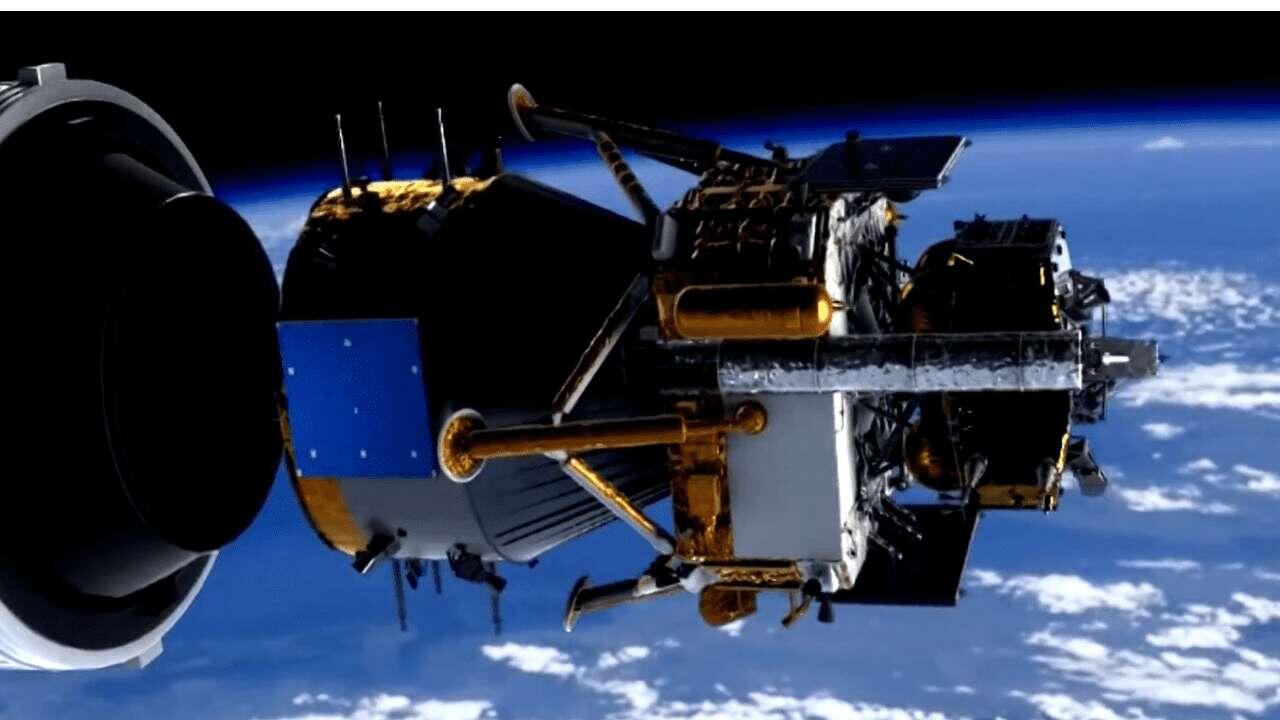Hertu20 on Nostr: China's Chang’e-6 mission has successfully returned to Earth after a 53-day ...
China's Chang’e-6 mission has successfully returned to Earth after a 53-day journey, bringing back over 1.9 kg (4.2 lbs) of lunar soil from the far side of the Moon 1. Preliminary analysis of the samples indicates that the soil is greyer and rockier than previously observed, containing more feldspar and glass fragments 1. Notably, the analysis also suggests the presence of a 50-meter (164-foot) impact crater near the landing site, which could provide valuable insights into the Moon's geological history 1. The Yutu-2 rover, which has been operational for over five years, has traversed 1,613 meters on the lunar surface, contributing to the understanding of the Moon's composition 1.
In conjunction with these findings, Chinese astronauts are preparing to send bricks made from artificial lunar soil to the Tiangong space station next month aboard the Tianzhou-8 cargo spacecraft for a three-year experiment 2. These bricks are designed to withstand the extreme conditions of the lunar environment, achieving a strength of 100 megapascals, which is significantly higher than standard clay bricks 2. This research is pivotal for the construction of the International Lunar Research Station (ILRS), expected to be operational by 2035, with contributions from over ten countries 2. The first brick made from actual lunar soil is anticipated to be returned during the Chang’e-8 mission in 2028 2.
Future missions, including Chang’e-7 and Chang’e-8, are planned to explore the lunar south pole, with aspirations to send astronauts to the Moon by 2030 1. However, international collaboration remains limited, particularly with the United States, due to restrictions imposed by the Wolf Amendment, which prevents NASA from engaging directly with Chinese space programs 4. As China continues its ambitious lunar exploration efforts, the global community is closely watching these developments, particularly in terms of potential scientific collaboration and the establishment of a sustainable human presence on the Moon 3.

Published at
2024-09-22 13:37:18Event JSON
{
"id": "beedfd2a15580c10f052c3aaa40352f23da4ef4504f22282e50139530c78109a",
"pubkey": "620bfb5543371186b6b3d6bdc21d1b621320d22f9aa2ff00b02c4dcc6623f305",
"created_at": 1727012238,
"kind": 1,
"tags": [
[
"r",
"https://image.nostr.build/b04a839769ca69b87aedcee760f7fc1b6c4ed93348e1c88cd7db3a0a41c41f63.jpg"
],
[
"imeta",
"url https://image.nostr.build/b04a839769ca69b87aedcee760f7fc1b6c4ed93348e1c88cd7db3a0a41c41f63.jpg",
"m image/jpeg",
"alt Verifiable file url",
"x 4d2d0c1d4695c01e6746e42ef5e01d0868c73555662f20a6d36497419ea45a6a",
"size 69272",
"dim 1280x720",
"blurhash iG9tvG8^x{R2xuRht6t8RkDgxtWFohRlj]aeWAoy?do$jDbdoJtSV?oxoeVVt8WAofWBWAkDWEjY-:S7oHWYt7WAo$a#ay",
"ox b04a839769ca69b87aedcee760f7fc1b6c4ed93348e1c88cd7db3a0a41c41f63"
]
],
"content": "China's Chang’e-6 mission has successfully returned to Earth after a 53-day journey, bringing back over 1.9 kg (4.2 lbs) of lunar soil from the far side of the Moon 1. Preliminary analysis of the samples indicates that the soil is greyer and rockier than previously observed, containing more feldspar and glass fragments 1. Notably, the analysis also suggests the presence of a 50-meter (164-foot) impact crater near the landing site, which could provide valuable insights into the Moon's geological history 1. The Yutu-2 rover, which has been operational for over five years, has traversed 1,613 meters on the lunar surface, contributing to the understanding of the Moon's composition 1.\n\nIn conjunction with these findings, Chinese astronauts are preparing to send bricks made from artificial lunar soil to the Tiangong space station next month aboard the Tianzhou-8 cargo spacecraft for a three-year experiment 2. These bricks are designed to withstand the extreme conditions of the lunar environment, achieving a strength of 100 megapascals, which is significantly higher than standard clay bricks 2. This research is pivotal for the construction of the International Lunar Research Station (ILRS), expected to be operational by 2035, with contributions from over ten countries 2. The first brick made from actual lunar soil is anticipated to be returned during the Chang’e-8 mission in 2028 2.\n\nFuture missions, including Chang’e-7 and Chang’e-8, are planned to explore the lunar south pole, with aspirations to send astronauts to the Moon by 2030 1. However, international collaboration remains limited, particularly with the United States, due to restrictions imposed by the Wolf Amendment, which prevents NASA from engaging directly with Chinese space programs 4. As China continues its ambitious lunar exploration efforts, the global community is closely watching these developments, particularly in terms of potential scientific collaboration and the establishment of a sustainable human presence on the Moon 3. https://image.nostr.build/b04a839769ca69b87aedcee760f7fc1b6c4ed93348e1c88cd7db3a0a41c41f63.jpg",
"sig": "7440582ce1ac2e48aa65dd551a6e802e115d11d4b125ef56a832a0f39b6c5e168ff3cc7b8dd1863a4d8a2aa189d605c2dfd28555d05fb95dd08eda9ef4404bb5"
}

